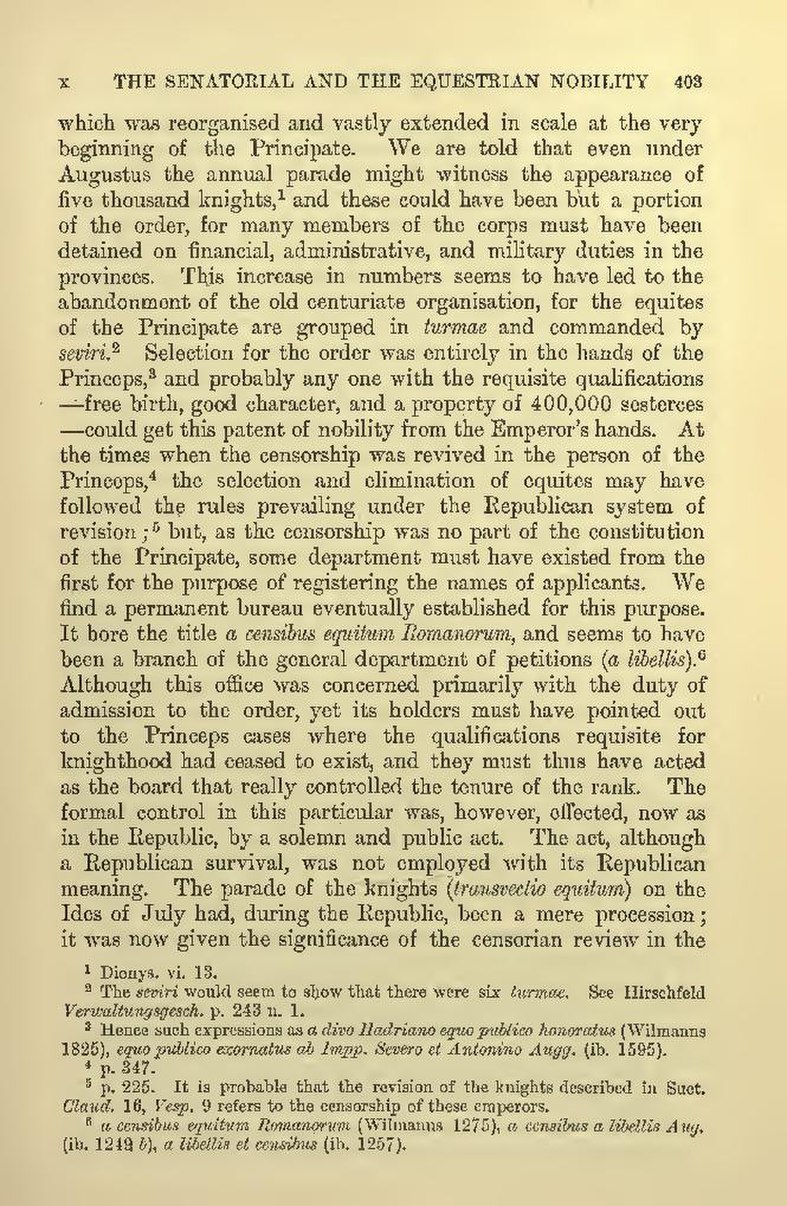which was reorganised and vastly extended in scale at the very beginning of the Principate. We are told that even under Augustus the annual parade might witness the appearance of five thousand knights,[1] and these could have been but a portion of the order, for many members of the corps must have been detained on financial, administrative, and military duties in the provinces. This increase in numbers seems to have led to the abandonment of the old centuriate organisation, for the equites of the Principate are grouped in turmae and commanded by seviri.[2] Selection for the order was entirely in the hands of the Princeps,[3] and probably any one with the requisite qualifications—free birth, good character, and a property of 400,000 sesterces—could get this patent of nobility from the Emperor's hands. At the times when the censorship was revived in the person of the Princeps,[4] the selection and elimination of equites may have followed the rules prevailing under the Republican system of revision;[5] but, as the censorship was no part of the constitution of the Principate, some department must have existed from the first for the purpose of registering the names of applicants. We find a permanent bureau eventually established for this purpose. It bore the title a censibus equitum Romanorum, and seems to have been a branch of the general department of petitions (a libellis).[6] Although this office was concerned primarily with the duty of admission to the order, yet its holders must have pointed out to the Princeps cases where the qualifications requisite for knighthood had ceased to exist, and they must thus have acted as the board that really controlled the tenure of the rank. The formal control in this particular was, however, effected, now as in the Republic, by a solemn and public act. The act, although a Republican survival, was not employed with its Republican meaning. The parade of the knights (transvectio equitum) on the Ides of July had, during the Republic, been a mere procession; it was now given the significance of the censorian review in the
- ↑ Dionys. vi. 13.
- ↑ The seviri would seem to show that there were six turmae. See Hirschfeld Verwaltungsgesch. p. 243 n. 1.
- ↑ Hence such expressions as a divo Hadriano equo publico honoratus (Wilmanns 1825), equo publico exornatus ab Impp. Severo et Antonino Augg. (ib. 1595).
- ↑ p. 347.
- ↑ p. 225. It is probable that the revision of the knights described in Suet. Claud. 16, Vesp. 9 refers to the censorship of these emperors.
- ↑ a censibus equitum Romanorum (Wilmanns 1275), a censibus a libellis Aug. (ib. 1249 b), a libellis et censibus (ib. 1257).
